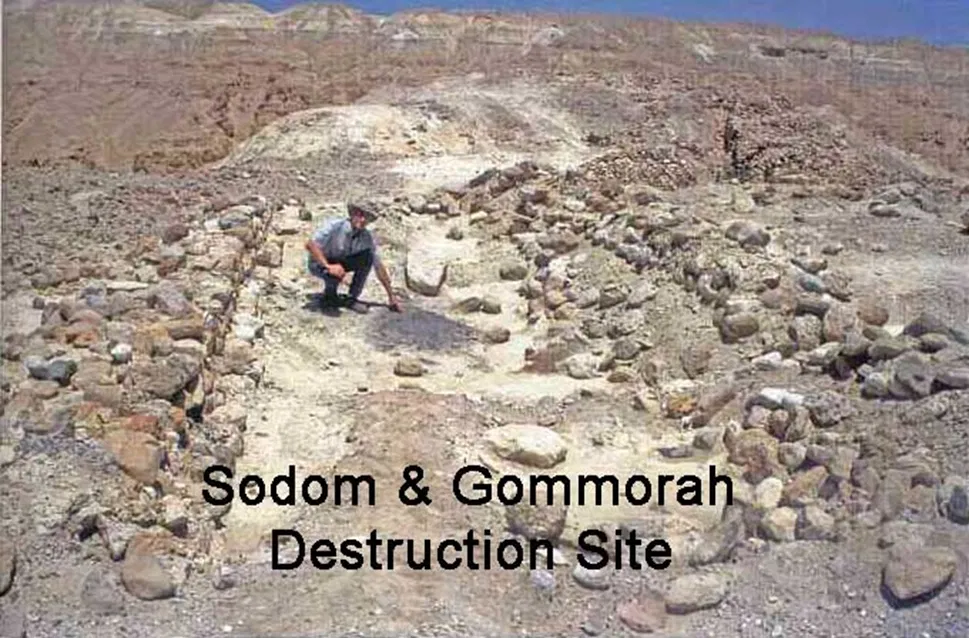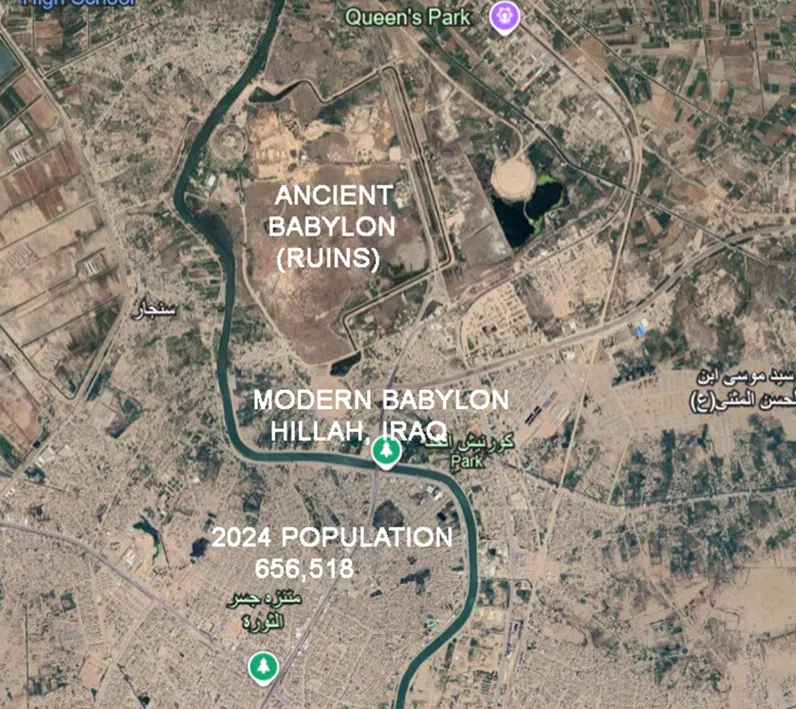THE TWO BABYLONS IN REVELATION
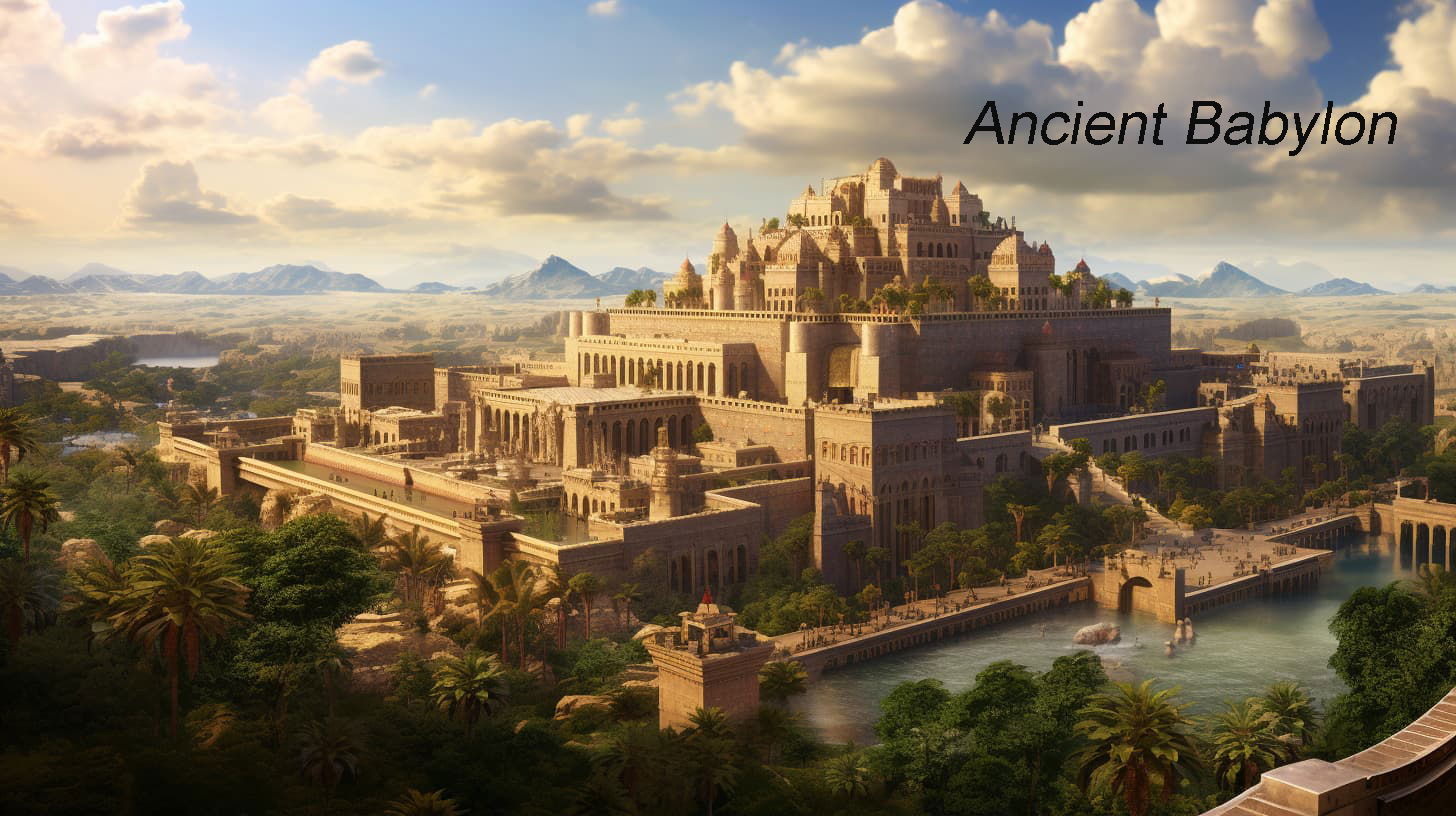
PART ONE
TWO DIFFERENT BABYLONS
I firmly believe (as do many Bible commentators) that there are TWO different Babylon’s that are going to be destroyed in the end times.
I believe, like most Bible commentators, that the First Babylon to be destroyed will be the Babylon city that is named in Revelation 17. - And, I believe like many Bible commentators, that the Second Babylon to be destroyed will be the Babylon city named in Revelation 18. - However, I do not believe that Bible commentators have come to recognize the FULL identity of the Babylon that is named in Revelation 18, upon which I will comment further in this article.
THE FIRST BABYLON
The FIRST BABYLON is found in Revelation 17, and it represents a "great city“ which is the headquarters of a 'One World Apostate Religious Organization'. This apostate religious organization is symbolized by a ‘Harlot Woman’.
The Babylon city where the apostate religious organization is located is most certainly Vatican City, Rome. And, according to Revelation 17:16, it will be burned with fire by Antichrist and the ten-nation confederacy that supports him. This will happen at about the middle of the Seven Year Tribulation Period.
The “One World Apostate Religious Organization” is already in its ‘formative stage’ by Pope Francis in Vatican City, Rome! Pope Francis is trying to unite all of the diverse religions in the world into a “One World Religion” through a gathering process known as 'Ecumenism' [a movement promoting worldwide unity among religions]. -- At the time of the writing of this commentary in 2024, the Pope has been quite successful at bringing many of the religious leaders of the world together.
(Please see my commentary on Revelation 17 for more details.) –
THE SECOND BABYLON
THE SECOND BABYLON The SECOND BABYLON is found in Revelation 18, and it is referred to as “the great city Babylon”. - This “great city” in Revelation 18 represents the location of where Antichrist's “One World Commerce Headquarters” will come to be set up sometime during the Seven Year Tribulation Period.
The SECOND BABYLON will receive destruction from God by a “great earthquake that will divide the city into three parts” (Revelation 16:19). This will happen towards the end of the Seven Year Tribulation Period when the Seventh Bowl Judgment is being poured out upon the earth by an angel. The city will then be attacked and burned by Kurdistan (the Kurds), who are the modern day "Medes" mentioned in Isaiah 13:17.
The destruction of the city of Babylon will be as that of Sodom and Gomorrah, which makes one wonder if a nuclear blast might also play a part in the total destruction of the Babylon that is named in Revelation 18.
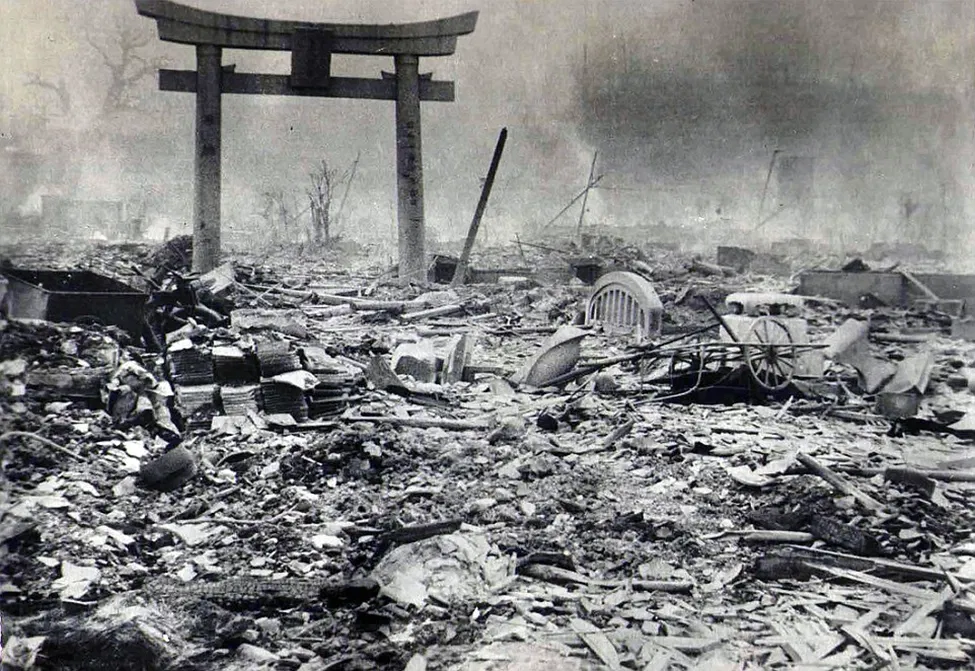
DESTRUCTION CAUSED BY NUCLEAR BLAST AT HIROSHIMA
TRUE IDENTITY OF THE SECOND BABYLON
There is an old idiom that comes into play when we consider the topic of the SECOND BABYLON. The old idiom states..."I can't see the forest for the trees!"
The old idiom, “I can’t see the forest for the trees” means that the parts are distracting the person from comprehending the whole. The person can’t see the entirety BECAUSE they are preoccupied with the details and overlook the bigger picture. In this context, it signifies the TREES are obscuring the fact that they collectively form a FOREST. [1]
This old idiom applies to me, and to other Bible commentators who have believed [like me in the past] that ancient Babylon will be rebuilt and will eventually become the “One World Commerce Headquarters” of Antichrist during the last 3-1/2 years of the Seven Year Tribulation Period. – However, today I believe that while Bible prophecy commentators are still focusing on the rebuilding of the ruins of ancient Babylon [the trees], the city of Hillah, Iraq [the forest] has grown to a 2024 population of 656,518 people! -- Yes, the city of Hillah (also spelled "Hilla, or "Al Hillah') includes the ruins of the ancient city of Babylon (which are adjacent to the city of Hillah) and together they make up the MODERN DAY CITY OF BABYLON. The following quotes prove this to be true! . . .
[BEGIN QUOTE] - The ancient city of Babylon, once renowned for its grandeur and power, has been transformed by modernization. This shift has resulted in a significant name change from Babylon to Hillah and a dramatic alteration to the city’s character.
In this article, we will explore how modernization has altered Babylon’s identity and led to its new name. First established in 1894 BC by King Hammurabi, Babylon quickly rose to prominence as one of the most powerful cities in the region. It was known for its impressive monuments and architecture, with Nebuchadnezzar II constructing an immense palace complex that included the famous Hanging Gardens of Babylon. After his death, however, Babylon began to decline as other powers gained strength in the area.
Modernization came into play during the 19th century when British forces occupied Iraq following World War I. The occupying forces sought to modernize Baghdad, which at the time was located near Babylon. As part of this effort, they changed the name of Babylon to Hillah so as to better reflect its contemporary character and identity. This marked a major departure from its past glory days as a center of power and culture; it also had psychological implications for those living within city limits who no longer felt connected to their hometown’s rich cultural legacy or associated it with any particular significance or importance. Furthermore, this shift led to a decrease in tourism due to visitors no longer feeling drawn towards Babylon’s history or importance.
Hillah, Iraq has been known to be the former Babylon. During its peak from 626 BC to 539 BC, it was a city of immense power and influence across the world. Although much of it has faded away with time, the ruins still remain visible today. Its story is one of intrigue and wonderment; filled with tales of rulers, battles, and culture that have left an indelible mark in history.
In summary, modernization has drastically impacted how we view and refer to ancient Babylon today. By changing its moniker from one steeped in history and culture to one that more accurately reflects its modern character and identity, Hillah is now seen as an industrial hub rather than an ancient center of power like it once was centuries ago. [END QUOTE]
Web Source: https://ancientspast.com/history-of-babylon-from-ancient-city-to-modern-day/
THE OLD AND NEW BABYLON, IRAQ
Here are some additional quotes showing that Hillah is also known as BABYLON…
[BEGIN QUOTE] - Al-Hillah, also known as Babylon, is a historic city located in the Babil Governorate [Babylon Province] of Iraq. It is situated approximately 85 kilometers south of Baghdad and has a rich cultural heritage dating back thousands of years.
Al-Hillah serves as an important administrative, economic, and cultural center in the region. . . . With regards to population, Al-Hillah is home to a diverse community. As of the latest available data, the estimated population of the city is around 500,000 inhabitants [656,518 in 2024]. The population primarily consists of Arabs, with various tribes and ethnicities adding to the city's vibrant cultural fabric. The people of Al-Hillah are known for their warm hospitality, strong familial bonds, and deep-rooted traditions. . . . .
Al-Hillah is rich in historical landmarks and cultural treasures. One of the most iconic landmarks is the ancient city of Babylon, which lies just outside the modern city limits. Babylon is renowned for its historical significance, including the Hanging Gardens, one of the Seven Wonders of the Ancient World. Visitors to Al-Hillah can explore the ruins of Babylon, which offer glimpses into the majestic structures and advanced civilization of the past. [END QUOTE]
Web Source: https://www.nicestsuburbs.com/showitem.php?item=al-hillah-babil-iraq#gsc.tab=0
[BEGIN QUOTE] - Al-Ḥillah, city, capital of Babil Governorate, [Babylon Province] central Iraq. It lies on the Al-Ḥillah Stream, the eastern branch of the Euphrates River, and on a road and a rail line running northward to Baghdad. -- Al-Ḥillah is now a prosperous river port and grain market. [END QUOTE]
Web Source: https://www.britannica.com/place/Al-Hillah
[BEGIN QUOTE] - Al-Hillah is located adjacent to the ancient city of Babylon, and close to the ancient cities of Borsippa and Kish. It is situated in a predominantly agricultural region which is extensively irrigated with water provided by the Hilla canal, producing a wide range of crops, fruit and textiles. Its name may be derived from the word "beauty" in Arabic. The river runs exactly in the middle of the town, and it is surrounded by date palm trees and other forms of arid vegetation, reducing the harmful effects of dust and desert wind. [END QUOTE]
Web Source: https://en.wikipedia.org/wiki/Hillah
[BEGIN QUOTE] - The modern-day name of Babylon is Hillah, a city in central Iraq. Hillah is located approximately 85 kilometers south of Baghdad and is situated on the eastern bank of the Euphrates River. The city has a rich history that dates back to ancient times when it was known as Babylon. Today, Hillah is a bustling city with a population of over 500,000 residents. It is a hub of economic activity, with agriculture, industry, and commerce playing significant roles in its economy. The city is also home to several historical sites and landmarks that reflect its ancient past, including the ruins of the original city of Babylon.
Despite its modern name, Hillah continues to be a place of great cultural and historical significance. Visitors to the city can explore its ancient ruins, visit museums, and learn about the rich history of Babylon. [END QUOTE].
Web Source: https://visitfranceguide.com/what-is-the-name-of-babylon-today/
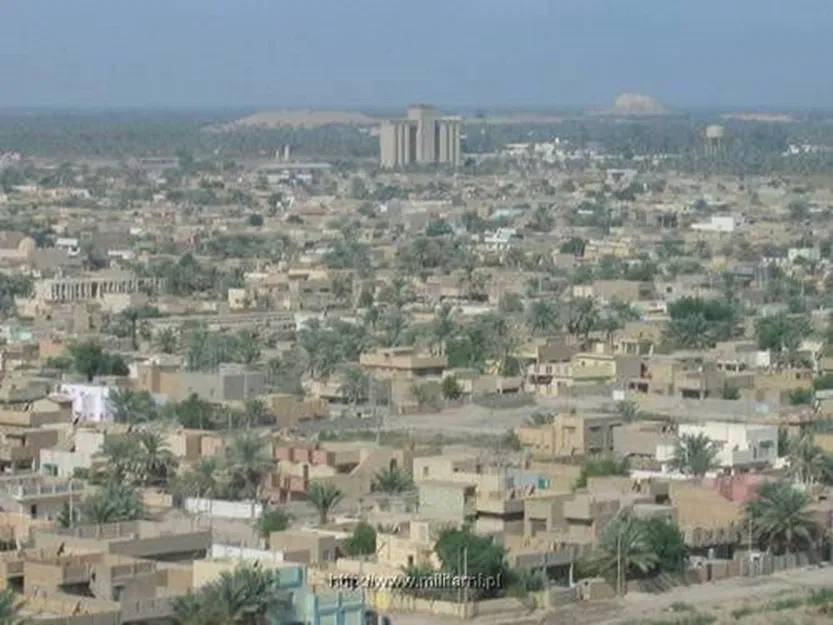 MODERN DAY BABYLON
MODERN DAY BABYLON
( CITY OF HILLAH, & ANCIENT BABYLON, IRAQ)
The modern day city of Hillah (Babylon) is the CAPTIAL CITY of the BABYLON PROVINCE (Governorate) in Iraq which is composed of districts.
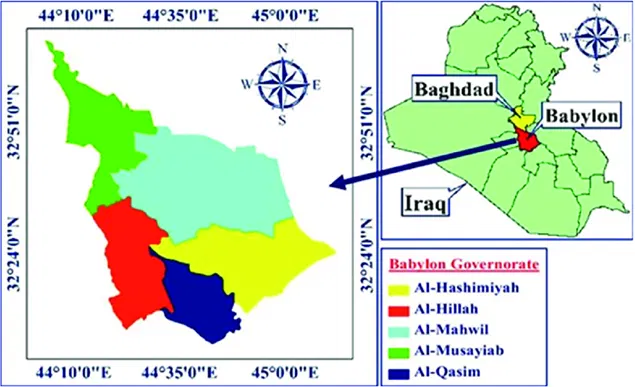
MAP OF BABYLON PROVINCE (GOVERNORATE)
LOCATED IN CENTRAL IRAQ
END NOTES
[1] GRAMMAR BRAIN. “What does “Can’t See the Forest for the Trees” Mean?”, Accessed November 3, 2024, Web: https://grammarbrain.com/cant-see-the-forest-for-the-trees/
